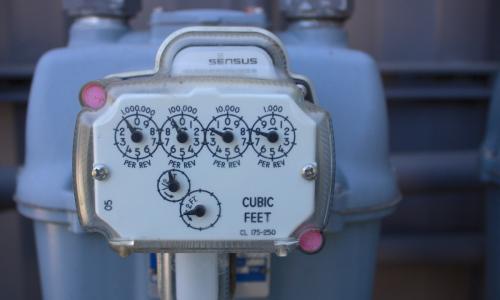Natural gas is a fossil fuel used in a wide variety of applications—but it comes with serious costs.
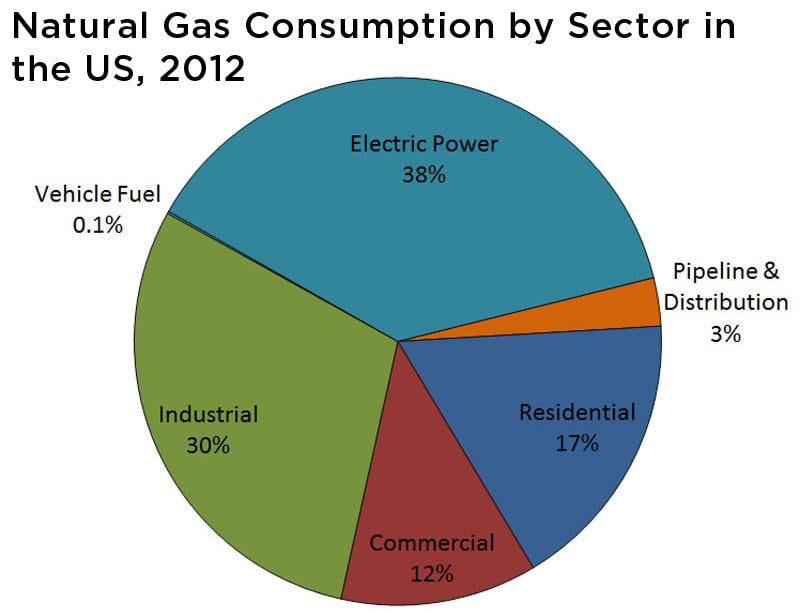
In the 19th and early 20th centuries, natural gas (or just "gas") was used primarily for street and building lighting, providing what was known as gaslight. Today, it’s used in homes, businesses, factories, and power plants.
In 2012, the United States consumed nearly 26 trillion cubic feet of gas, primarily in the electric power and industrial sectors [2]. Although domestic gas production has grown substantially in the last decade, consumption still exceeded production in 2012 [3]. Pipeline imports from Canada supply most of the balance. A smaller amount is imported as liquefied natural gas via supertankers [4].
The US Energy Information Administration projects a 50 percent rise in global fossil gas consumption between 2010 and 2035, with growth in Brazil and China driving increased demand [5].
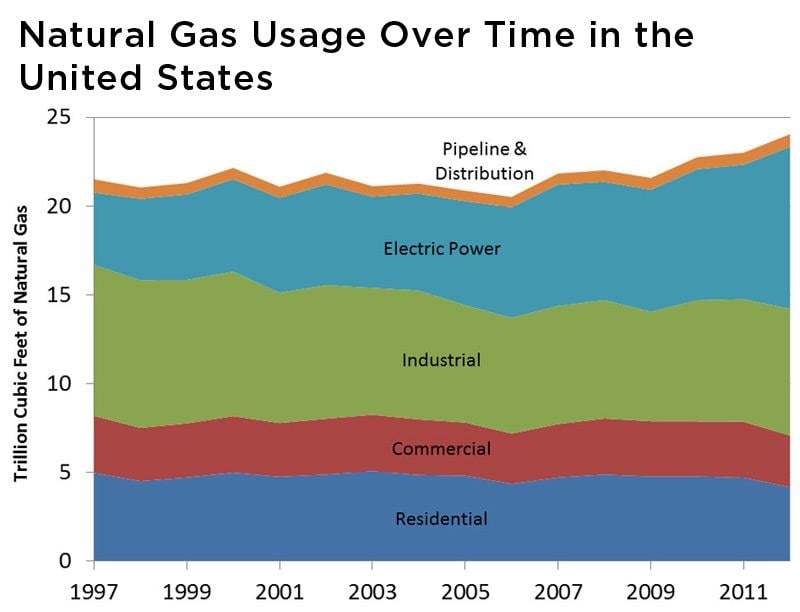
Electric power
The fastest growing use of gas today is for the generation of electric power. Gas power plants usually generate electricity in turbines (which are derived from jet engines), directly using the hot exhaust gases of fuel combustion.
Single-cycle gas turbines generally convert the heat energy from combustion into electricity at efficiencies of 35 to 40 percent. Higher efficiencies of 50 percent or more are possible in natural gas “combined-cycle” (NGCC) plants. NGCC plants first use the combustion gases to drive a gas turbine, after which the hot exhaust from the gas turbine is used to boil water into steam and drive a steam turbine.
Low gas prices in the 1990s and early 2000s stimulated the rapid construction of gas-fired power plants. Natural gas passed coal as the energy source with the largest installed electricity generation capacity in the United States in 2003, and as the largest source of electricity in the country in 2016.
Historically, the operating costs of gas plants were higher than those of coal-fired power plants, because the fuel was more expensive. That changed in recent decades; today, new gas plants are cheaper to construct and operate than coal plants in the United States, though often more expensive than cleaner options (such as wind and solar).
Many gas plants offer greater operational flexibility than coal plants, as they can be turned up or down more readily. Because of this, many gas plants have been used to provide peaking capacity at times when electricity demand is especially high, such as the summer months when air conditioning is widely used. However, renewable energy, in conjunction with energy storage and increased flexibility and efficiency of electricity use, is a cleaner, safer, and increasingly more common alternative for meeting that need.
Natural gas’ contribution to electricity generation has also grown rapidly. However, an electricity mix dominated by gas is not a viable long-term solution, as it’s still a fossil fuel that produces health-harming pollution and contributes to global warming when leaked and burned.
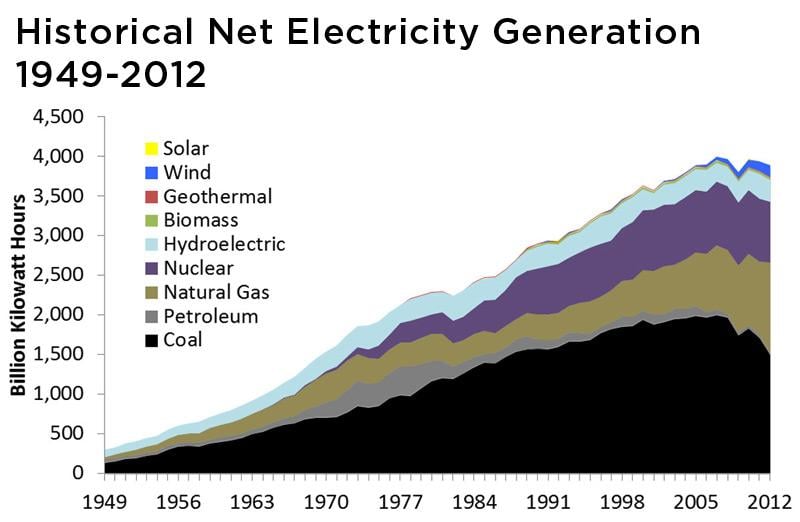
Heating and cogeneration
Residential and commercial uses account for a significant portion of US gas consumption, as gas is used in buildings for space and water heating and for cooking.
Measures to increase building efficiency are widely considered the most cost-effective way to reduce the amount of gas we use. One study estimated that an ambitious program to improve building performance through means such as high-efficiency insulation, windows, furnaces, water heaters, and other appliances could save 234 trillion cubic feet of gas over the next 50 years [10].
Gas can also be used to produce both heat and electricity simultaneously, a technology called “cogeneration” or “combined heat and power” (CHP). Cogeneration systems are much more efficient than separate gas systems for generating electricity and heat, able to put 75 to 80 percent of the energy in gas to use.
Industrial and other uses
Fossil gas sees a broad range of other uses in industry, as a source of both heat and power and as an input for producing plastics and chemicals. Most hydrogen gas (H2) production, for example, comes from reacting high temperature water vapor (steam) with methane. Today, the resulting hydrogen is mostly used to produce ammonia for fertilizer, one of the most important industrial products derived from natural gas.
Hydrogen produced from gas can itself be used as a fuel. The most efficient way to convert hydrogen into electricity is by using a fuel cell, which combines hydrogen with oxygen to produce electricity, water, and heat. Although the process of reforming natural gas to hydrogen still has associated carbon dioxide emissions, the amount released for each unit of electricity generated is much lower than for a combustion turbine.
Compressed natural gas (CNG) has been used as a transportation fuel, mostly in public transit. CNG, which is compressed at over 3,000 psi to one percent of the volume the gas would occupy at normal atmospheric pressure, can be burned in an internal combustion engine that has been appropriately modified. About 0.1 percent of the gas consumed in the United States in 2012 powered vehicles, representing the energy content of more than 5 million barrels of oil [12].
Compared to gasoline, CNG vehicles emit far less carbon monoxide, nitrogen oxides (NOx), and particulates. The main disadvantage of CNG is its low energy density compared with liquid fuels, as well as its climate and public health risks. Additionally, a gallon of CNG has only a quarter of the energy in a gallon of gasoline [13]. CNG vehicles therefore require big, bulky fuel tanks.
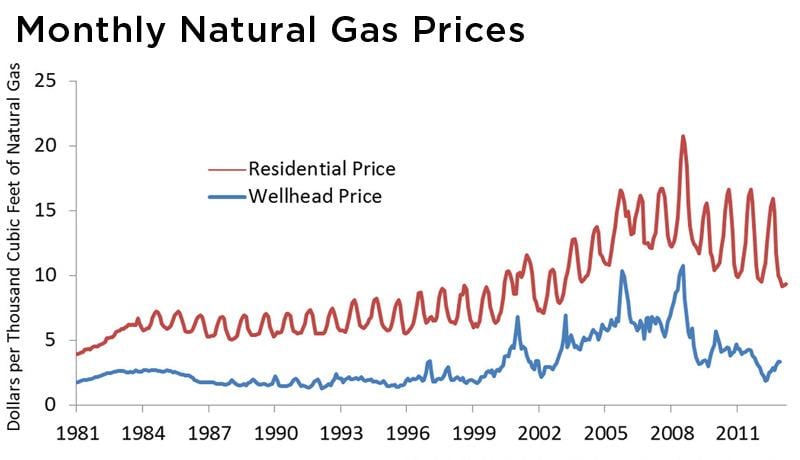
Implications of competing uses
The wide range of uses for gas makes it a critical resource for the United States and world economies. This versatility also means that changes in gas demand for one use can affect gas prices for many other applications. During the 1990s, gas prices in the United States were generally low and stable. The major expansion of natural gas use in power plants led to steady increases in gas prices for all uses, including home heating and industry. Since the early 2000s, gas prices have been notable for their volatility. After spiking to record levels in 2005 and 2008, prices after the global economic downturn are at their lowest in eight years.
Part of this volatility stems from the difficulties in transporting gas where pipeline infrastructure is not already in place. Because of this limitation, there is no worldwide market price for gas, and local prices can be heavily dependent on regional production and availability.
The dependence on regional gas supplies can also threaten countries’ energy security. Much of Eastern and Central Europe’s gas supply comes from Russia and passes through pipelines in several different countries on its way westward. Repeated disputes between Russia and Ukraine, for instance, have led to gas shutoffs that have caused shortages in countries as distant as France and Italy [14].
References:
[1] Energy Information Administration. 2011. Annual Energy Review 2011. Table 1.2 Primary Energy Production by Source, Selected Years, 1949-2011.
Energy Information Administration. 2012. Natural Gas Consumption by End Use.
[2] Energy Information Administration. 2012. Natural Gas Consumption by End Use.
[3] Energy Information Administration. 2012. Natural Gas Gross Withdrawals and Production.
[4] Energy Information Administration. 2012. US Natural Gas Imports by Country.
[5] Energy Information Administration. 2011. International Energy Outlook 2011. Natural Gas: World Natural Gas Consumption by region, Reference Case.
[6] MIT Energy Initiative. 2011. The Future of Natural Gas.
[7] Energy Information Administration. 2012. Electricity Data Browser. Net Generation for All Sectors.
[8] US Department of Energy. 2013. Natural Gas. Online at: http://fossil.energy.gov/education/energylessons/gas/index.html.
[9] American Gas Association. 2011. DOE to Issue Direct Final Rule (DFR) on Residential Furnaces Mandating 90% AFUE Furnaces in the “North”.
[10] Natural Resources Defense Council. 2008. Efficiency is the Faster and Cheaper Way to Power Natural Gas Prices.
[11] http://www.ucsusa.org/global_warming/solutions/reduce-emissions/climate-2030-blueprint.html.
[12] Energy Information Administration. 2012. Natural Gas Consumption by End Use.
[13] US Environmental Protection Agency. Clean Alternative Fuels: Compressed Natural Gas.
[14] Kramer, Andrew E. 2009. Russia Cuts Off Gas Deliveries to Ukraine. New York Times. January 1.
